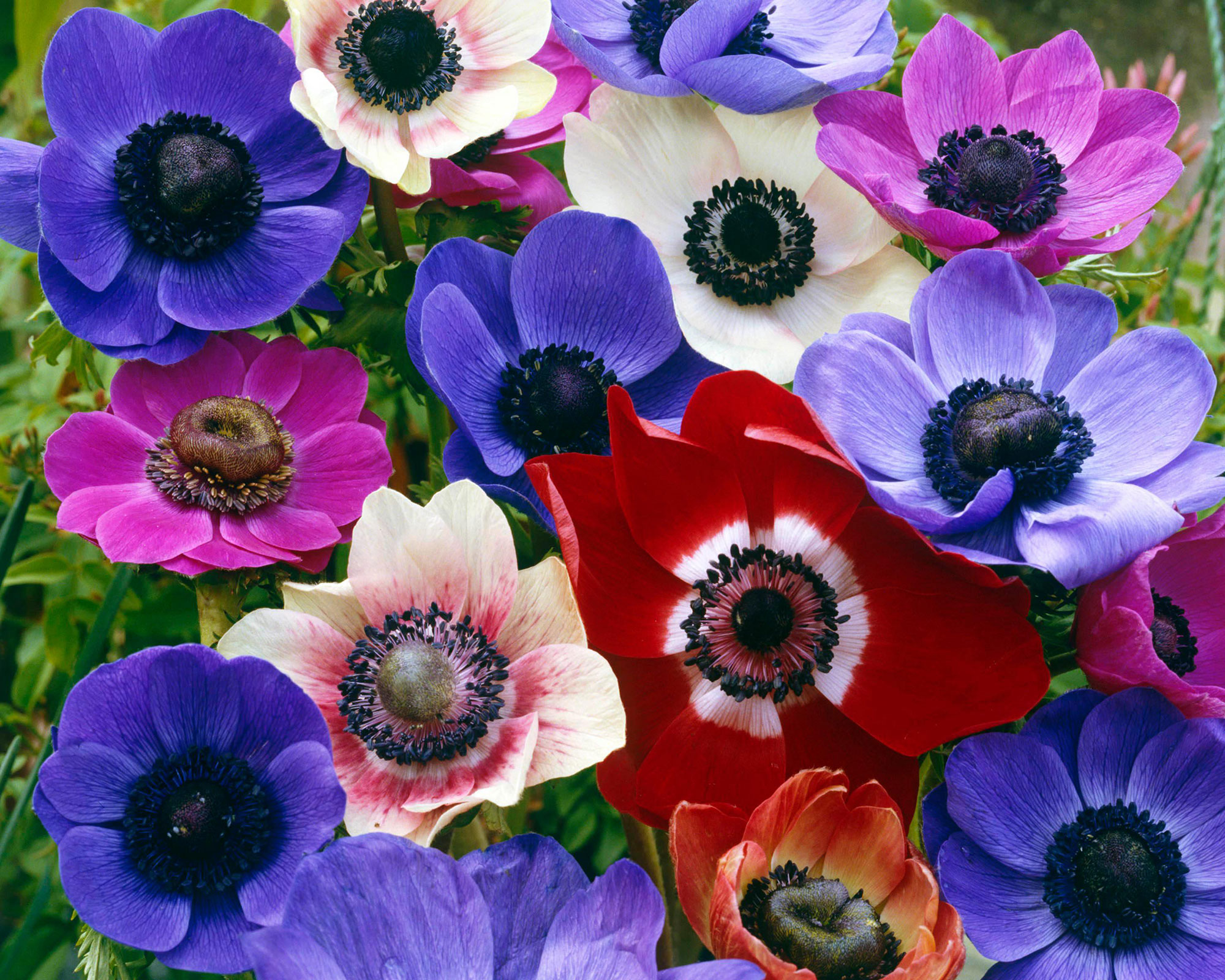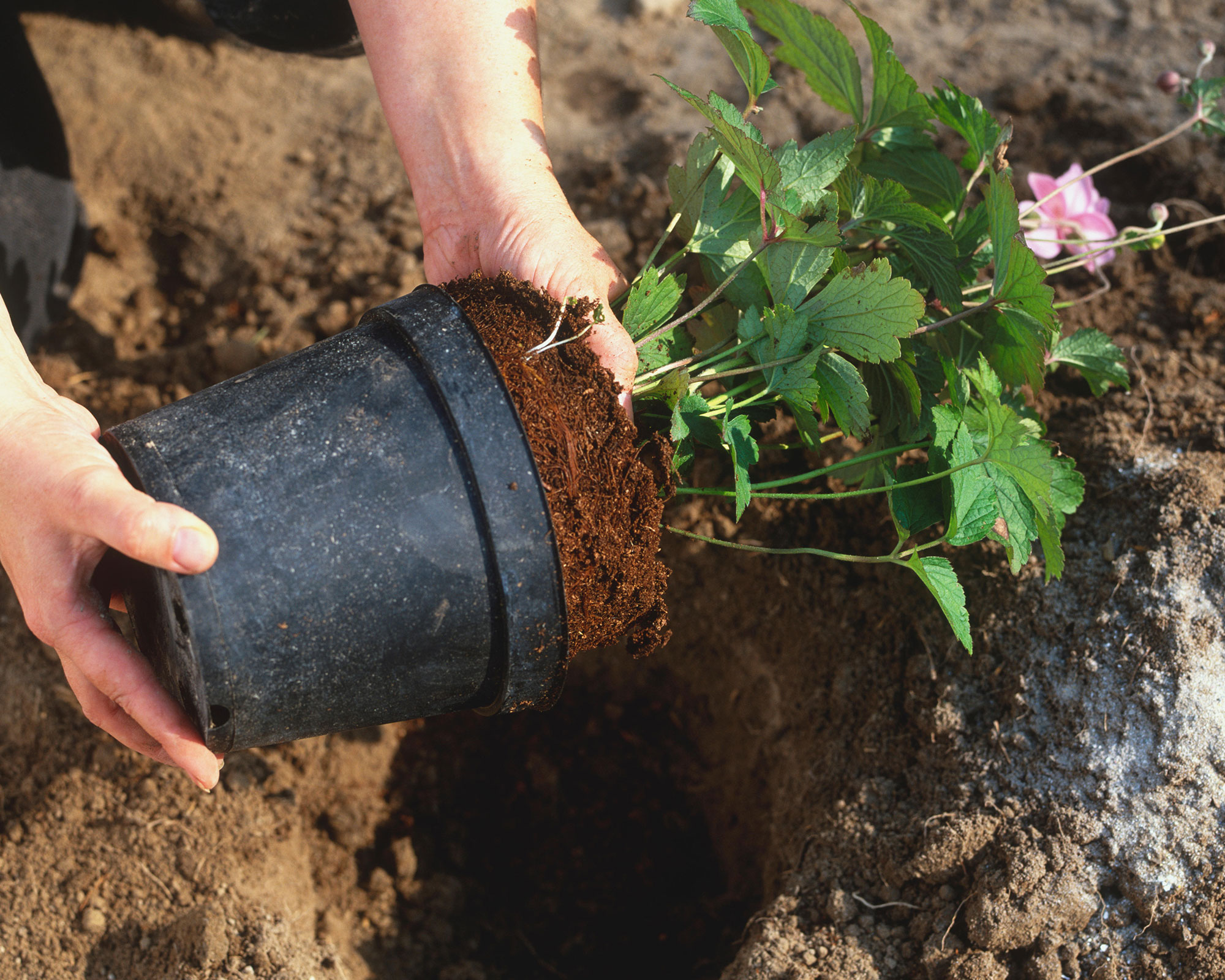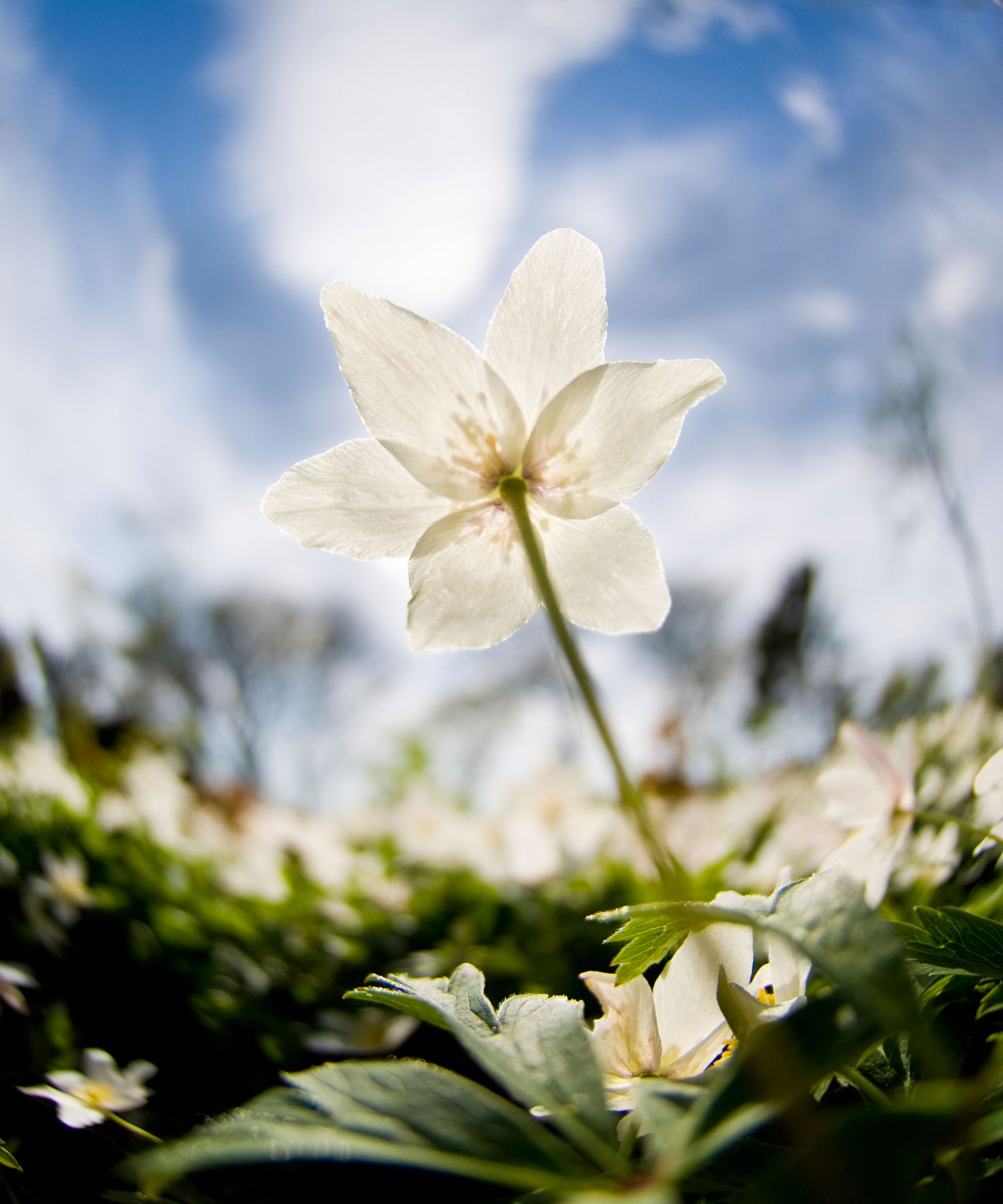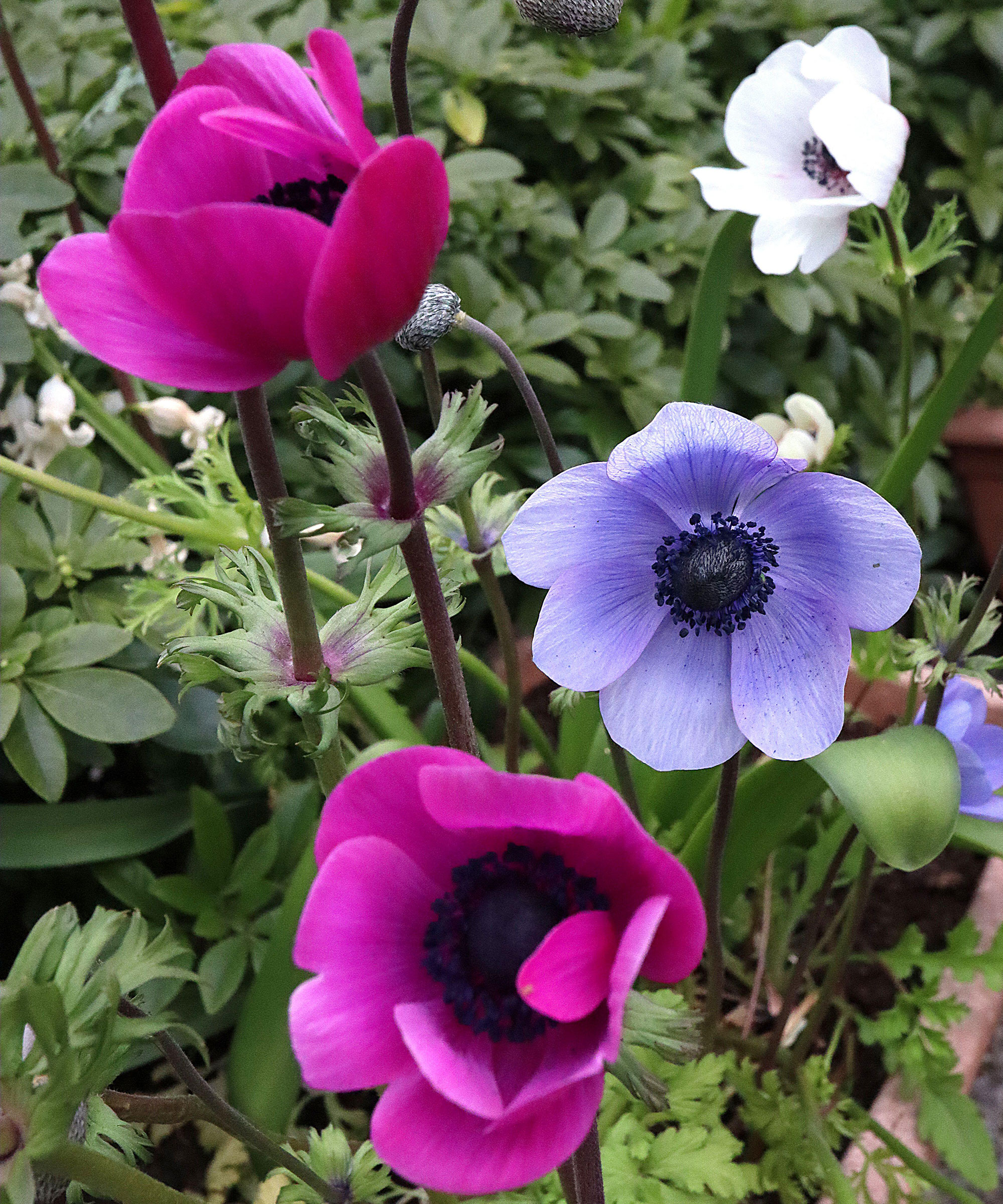Anemones care and growing guide: tips for all-year success
Learn how to grow anemones and you'll soon discover that these versatile plants are suited to every area of the garden


Anemones are a diverse group of plants made up of species that differ significantly in their size, in the garden situations they prefer and in their native habitats.
All have in common saucer- or cup-shaped flowers with up to about 20 petals in almost every color of the rainbow. A few have extra petals creating a double flowers.
The petals are arranged in rings around a dusty cluster of stamens carrying colorful pollen in a range of different shades including yellow, white and blue.
The result is flowers that look a little like daisies or wild roses and the combination of the variety of petal colors and the range of pollen color provides us with some delightful flowers.
Anemones vary in height from a few inches to a few feet, some prefer sun and others shade. Some prefer cool shaded conditions, while some are happier in hot, dry sites. Some remain tight and compact in growth, some spread strongly at the root and a few make fine, long lasting cut flowers.
All of which means they are a versatile option for adding to flower bed ideas in any style of garden.

The different kinds of anemones
Anemones can conveniently be split into three groups, each with its own style and its own needs: spring flowering woodland varieties (wood anemones) that you can pair with other shade-loving plants, spring-flowering sun lovers (Mediterranean anemones), and summer and fall flowering (or Japanese) anemones.
1. Spring-flowering anemones
Often called wood anemones, these spring-flowering plants are low growing with rather brittle roots looking a little like twigs, that spread steadily just beneath the surface.
For shady situations, either under or around deciduous shrubs, under deciduous trees or sheltered from the heat of the midday sun, the spring flowering, shade loving wood anemones will hold their own amongst the best ground cover plants.
Small flowers up to 1.5in (4cm) across with up to a dozen petals in blue, purple, yellow or occasionally pink open just above the prettily divided foliage. They make good woodland plants as they appreciate dappled or partial shade and fertile soil.

Look for varieties of Anemone nemorosa, in blue or white, Anemone ranunculoides, in bright yellow, and Anemone x lipsiensis in pale creamy yellow. The experts at Edelweiss Perennials describe Anemone x lipsiensis as 'Pale yellow flowers above bronze tinted foliage. Spreading, easy to grow "filler" for the woodland garden or in front of a shady border'.
Varieties of Anemone blanda, such as the dazzling ‘White Splendor’ or the vibrant ‘Pink Star’, will take more sun.
Anemone nemorosa ‘Robinsoniana’ is pale blue and ‘Virescens’ is a pretty lacy double green. The flowers of Anemone ranunculoides are like dainty little buttercups.

2. Mediterranean anemones
If you are looking for plants to add to a gravel garden and other places with hot, dry summers and mild winters choose the Mediterranean types.
Sometimes called poppy anemones, from the red flowers of wild types, from rather knobbly, nut-like tubers, prettily divided leaves and upright 10-12in (25-30cm) flower stems develop in spring and early summer.
When planting bulbs, make sure your soil is enriched with well-rotted compost or manure and drains well, as bulbs and tubers rot in soggy earth. After flowering the plants die back and remain dormant until the next growing season.
Mediterranean anemones appreciate plenty of sunshine, good drainage and a dry spell in summer. They are definitely worth adding to your Mediterranean garden ideas when planning a border in a sunny spot.
Look for De Caen Group with single flowers, the St Brigid Group with semi-double flowers, and a few named varieties in single colors. They can also be planted in rows specifically as cutting garden flowers. ‘Hollandia’ is a vibrant red, ‘Mr Fokker’ is deep blue.

3. Japanese anemones
For mid summer to mid fall, the choice is clear. Japanese anemones are tall and prolific and very easy-to-grow, very frost hardy perennials. Their bold foliage is a feature before they bloom, and in flower they provide a softer look alongside fall stalwarts including different types of dahlias and chrysanthemums.
These summer and autumn flowering perennials reach anything from 2-5ft (60cm-1.5m), with large boldly divided foliage and sprays of flowers like huge buttercups in reddish purples, pink shades and white.
Apart from being noticeably larger plants than other anemones, these summer and fall varieties have deep woody roots that can spread.
Look for varieties of Anemone x hybrida and Anemone hupehensis as well as Anemone leveilei.
'Honorine Jobert' is pure white, 'Königin Charlotte' is clear pink, 'Pamina' is reddish purple, 'September Charm' is pale pink with darker tints. Wild Swan ‘Macane0001’ is shorter and neater, with white flowers tinted blue on the backs of the petals.

How and when to plant anemones
- Wood anemones are best planted in late summer and fall, while dormant, or in spring when starting into growth. Bagged roots should be planted as soon as possible after arrival. Be gentle when you plant, as the twiggy roots are easily broken. Amend the site with weed-free organic matter, the compost from last year’s patio pots is ideal, and mulch after.
- Mediterranean varieties are best planted in the fall, in mild areas, or as soon as the ground is suitable in spring. In zone 8 they can be treated as hardy, be sure that the site is well drained and plant 3-4in (7.5-10cm) apart and 2-3in (5-7.5cm) deep. For cutting, plant in rows and double the spacing.
- Japanese anemones can be planted at any time that soil conditions are suitable. Think carefully before deciding on a site, if you decide to move them, pieces of root always seem to be left behind and re-grow. They appreciate rich, well drained conditions, full sun to partial shade, and are best given space into which they can expand.

Anemones care
Wood anemones are a low maintenance plant and need little attention, they can be left to spread steadily and are never so dense as to smother neighbors. They will intermingle with other low shade loving spring perennials such as primroses. An autumn mulching with weed-free organic matter is appreciated.
When the foliage of these and Mediterranean anemones starts to look ragged in early summer, the debris can be cleared away. Mediterranean types also appreciate feeding while in growth and regular deadheading of flowers.
Japanese anemones need discreet support in windy situations and thoughtful deadheading, cutting back the old flowers below foliage level, not leaving cut stems on view. Try not to damage the roots while working around the plants as this will encourage them to send up too many new shoots.

How to make more anemones
- Carefully dig up wood anemones in late summer or fall, tease the roots apart and replant at once in soil amended with weed-free garden compost or other organic matter.
- Mediterranean types can be dug up and the tubers separated for replanting in fall or early spring. Although they make tight perennial clumps in gravelly conditions, when grown for cutting richer conditions are suitable as long as the garden drainage is good.
- Pieces of the black woody roots of Japanese anemones can be separated off in fall or early spring. Excavate the soil around the roots and use pruners to snip off portions of root for re-planting. In spring, it is often clear where new shoots are starting to develop and the roots can be cut with a length of root and a shoot at the top. Replant just a few inches deep.

Problems with anemones and how to solve them
In general, anemones are trouble-free. Slugs and snails may cause problems for wood anemones and Japanese anemones, and aphids may be noticed but rarely cause severe damage. You can help combat all these pest problems by using a simple and organic orange peel pest hack that's been a gardener's hidden weapon for decades!
The more serious problems tend to be cultural ones. Shade-loving types can find themselves in too much sun, perhaps because a tree or shrub is removed. Mediterranean types may rot if conditions are too damp.
Japanese anemones may need support and this is difficult to achieve effectively without the sight of the canes or string spoiling the display so the supports should be set so that they reach just below the foliage.

Are anemones invasive?
Japanese anemones can be a nuisance in the garden and may spread in your garden borders and start to smother their neighbors. But they are not noted as being invasive plants in wild places anywhere in the country.
If they are spreading too vigorously in the garden it is possible to dig them out but the roots can grow unexpectedly deep in the soil and pieces of the woody roots that are left behind will usually sprout and make new plants. So be vigilant.

Are anemones deer resistant?
Wood anemones, Mediterranean anemones and Japanese anemones are generally deer resistant plants and will be ignored by deer in favor of something more palatable.
However, there does sometimes come a point when anemones are sampled and, if there are no other plants around that the deer prefer, then the plants can be damaged.
Can you grow anemones in pots?
Wood anemones are not a good option for your container gardening ideas as after their spring display they quickly die down leaving an empty space. Japanese anemones can be grown in pots but are too vigorous to share a container with other plants so are best planted out.
Mediterranean anemones, on the other hand, are longer lasting and are definitely worth including in your spring container ideas.
Plant in fall, with other spring flowering plants such as dwarf wallflowers, pansies and violas and polyanthus, then in late spring replace with a summer display, keeping the anemone tubers to replant the following year.

Where to buy anemones
Now you've learned how to grow anemones, chances are you'll want to stock up on these versatile plants for your garden. Follow our quick links to buy direct from leading suppliers in both the US and the UK.
Where to shop for anemones in the US:
- Shop for anemones at Bluestone Perennials
- Shop for anemones at Brent and Becky's Bulbs
- Shop for anemones at Burpee
- Shop for anemones at Edelweiss Perennials
- Shop for anemones at Lowe's
Where to shop for anemones in the UK:

Graham Rice is a garden writer who has won awards for his work online, and in books and magazines, on both sides of the Atlantic. He is a member of a number of Royal Horticultural Society committees and the recipient of the 2021 Garden Media Guild Lifetime Achievement Award.
